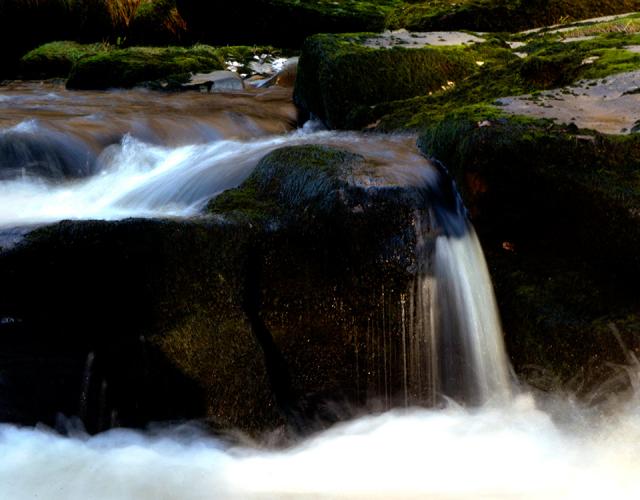Within the grounds of Bolton Abbey in North Yorkshire is to be found one of England’s most impressive natural wonders, the Strid. A little way upstream the River Wharfe looks like a perfectly normal river, some thirty-feet wide with frothing currents and waves, but then suddenly its course narrows, forcing its water through a narrow gap between two banks of mossy boulders.
Instead of flowing in a wide horizontal course, the waters begin to flow vertically in the tight shaft created by the wearing of softer rock by the circular motion of small stones in hollows. The consequence is that at this point the river takes on a new guise with a deceptively deep and treacherous current and beneath the banks lies a network of caves and crevices. It is not known exactly how deep the Strid is but one amateur explorer, using a sonar device, recorded a reading of 65 metres.
For the foolhardy or the adventurous, the fact that the gap between the banks at this point is only two metres wide presents an irresistible invitation to try to jump across the roaring chasm. However, failure is inevitably fatal; anyone falling in will find themselves sucked under the water in a matter of moments and pulverized against the rocks time and time again until they were completely unrecognisable. No one is known to have survived a fall into the Strid and not for nothing is it known as England’s killer creek.
Indeed, Bolton Abbey owes its existence to an unfortunate drowning. According to local legend, immortalized in William Wordsworth’s The Force of Prayer, which was inspired by his visit to the area in 1807, William de Romilly was an early victim. De Romilly, groomed to become the next king of Scotland, was walking in the area with his greyhound in 1152 when he was overcome by an urge to jump the Strid, attempting the jump with the dog still on its leash. The dog, sensibly, refused to jump, the leash caught around William and he plunged to his death.
His grief-stricken mother, Lady Alice de Romilly, who owned the surrounding lands, donated some of it to minks so that they could pray for William’s soul. The subsequently built Bolton Priory which became a local landmark and the source of the Strid’s name. The spot was also immortalized in Gertrude Atherton’s short story, The Striding Place (1896).
There are still fatalities to this day. The moral of the tale is to enjoy the spectacular sight but do not stray too near the banks. You have been warned.
This post first appeared on Windowthroughtime | A Wry View Of Life For The World-weary, please read the originial post: here

